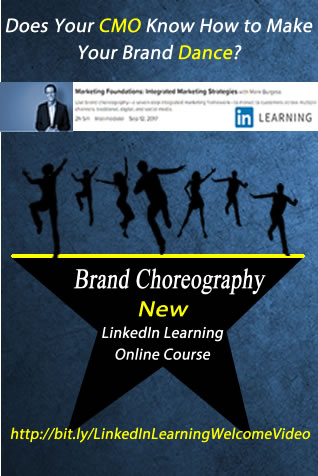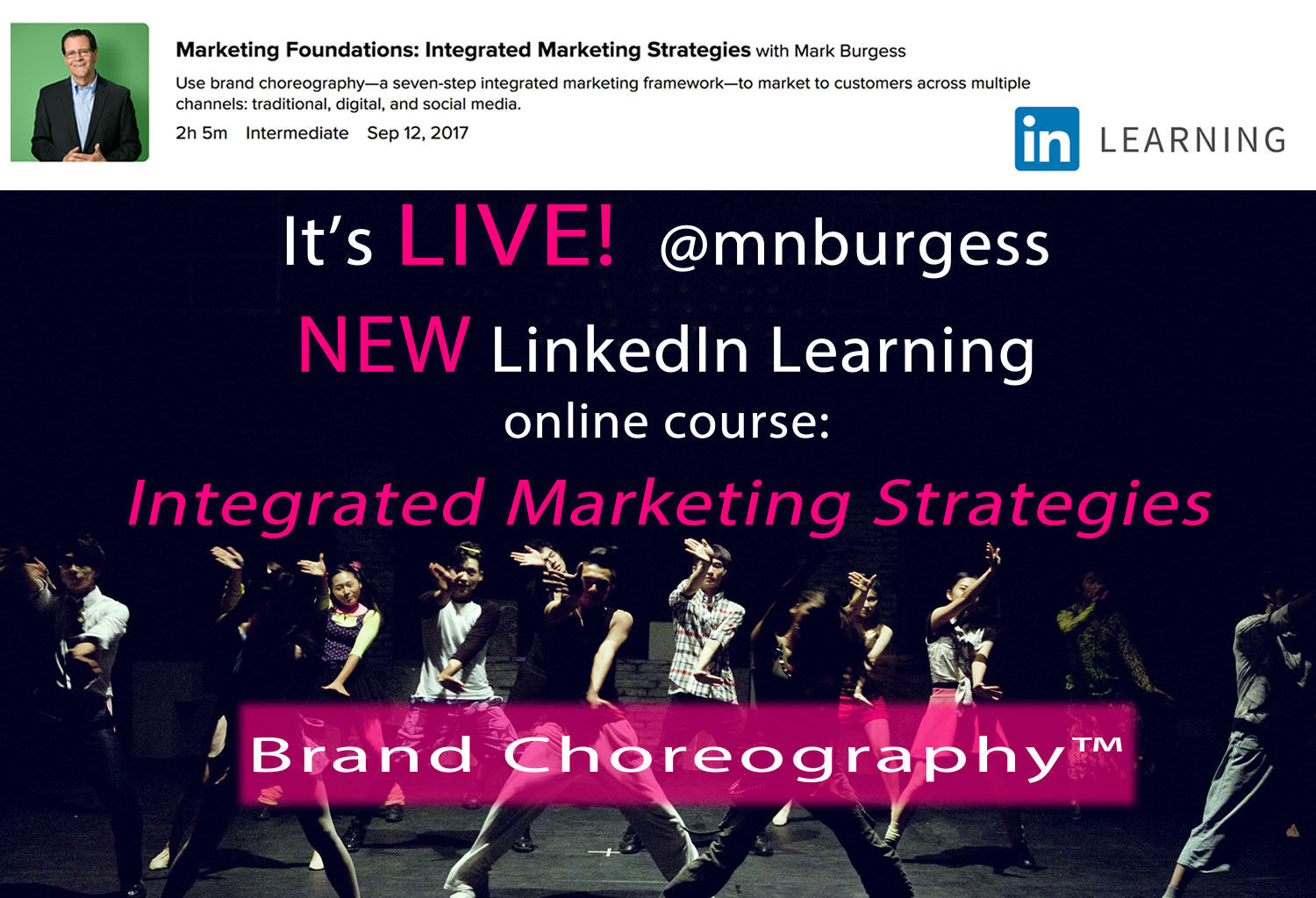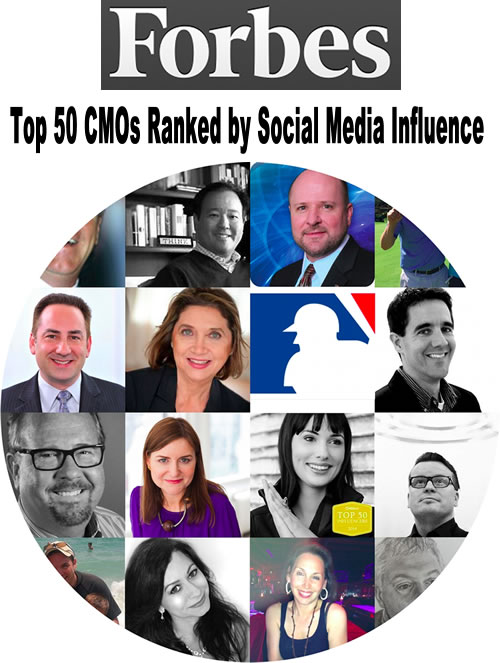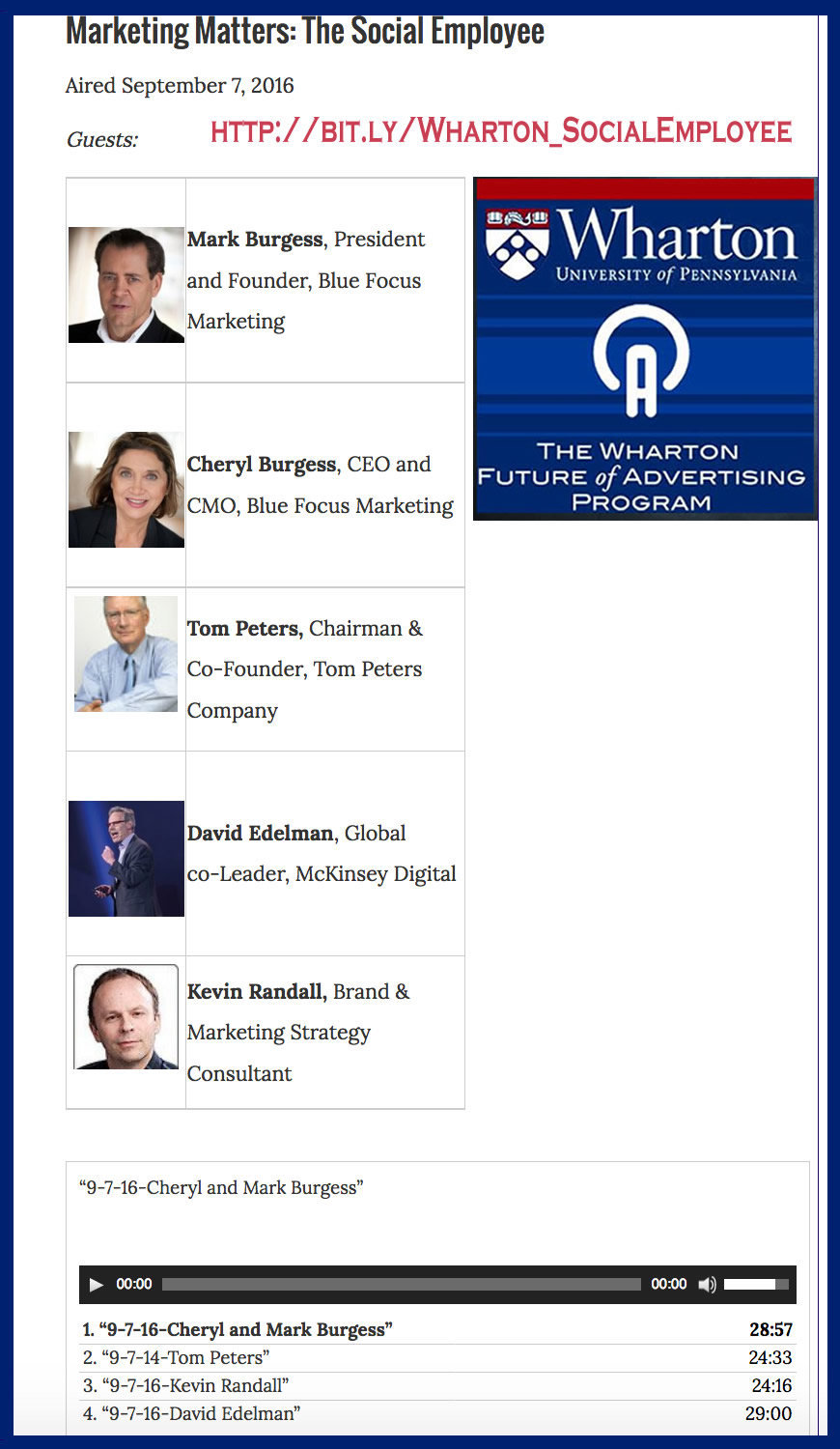What exactly is a “Social Executive”?
What exactly is a social executive, and what traits do they exhibit that other businesses looking to jump into the digital bazaar would be wise to emulate? Fortunately, thanks to Mark Fidelman’s recent piece “The 7 Personality Types of Extremely Anti-Social Executives,” we have a very strong idea of what the Social Executive is not.
In Fidelman’s piece, he used the example of Captain Edward Smith—who helmed the Titanic for its famously doomed maiden voyage—to illustrate what a bad executive looks like. As Fidelman put it, “Most experts agree that although the Captain went down with the ship, he wasn’t a hero. In fact, he was the architect of the situation and due to his ineffectual management the ship sank.” But for every stubborn or misguided manager, we can also find examples of stalwart leaders, astute decision makers and trusty commanders.
In the business world, one good example would be Michael Dell, Chairman and CEO of Dell Computers. In her recent article “Connect with Business Leaders: LinkedIn is the Fortune 500 Exception,” Lori Ruff already went a long way in singing Dell’s praises: “Michael Dell has taken the virtues of LinkedIn and used them to propel forward. His own extensive network (around 20,000 first level connections) allows him to stay connected with partners and clients around the world. He can update them instantly and simultaneously with statuses, access crucial information at the drop of a hat, and organize meetings based on travel schedules with ease.”
To put it another way, Michael Dell simply gets it. He understands that businesses can no longer afford to rest on their laurels while the digital bazaar transforms the world around them. More importantly, however, Dell understands that in order to promote change he must lead by example. No executive has all the solutions to the many questions surrounding the shifting corporate landscape, but at least Dell isn’t afraid to look for the answers.
Using Dell as our model of forward-thinking leadership, I offer these seven traits of what it takes to be an affective social executive. Fidelman has expertly identified the traits of those executives unafraid or incapable of changing with the times, but now it’s time to seek out the antidote.
#1 The Malleable Mind
Think of the “Malleable Mind” as the counter to Fidelman’s “Short Sleeve Fat Tie Executive.” Whereas Fat Tie Execs expect to be sole originators of all ideas, cruelly dictating company agenda from the confines of their office, Malleable Minds value the input of their employees. They aren’t threatened by change—in fact they’re often excited by it, and actively encourage an environment of new ideas and approaches. Malleable Minds recognize that employee initiative and collaboration are essential cornerstones of the social business, and they encourage their workers to utilize social media and discuss new ideas that might improve day-to-day operations. Malleable Minds know that you can’t keep a good idea down for long, and see it as their job to absorb information and help put ideas into motion.
Identifiable Traits – Malleable Minds understand that they’re not the only ones with good ideas. They are unburdened by ego, actively seek feedback on their own initiatives and welcome the opinions of others. They understand that respect is earned not through an iron fist, but through and open mind. They may be the boss, but they do not take their positions for granted.
#2 The Multilateral Boss
Multilateral bosses know that it’s not just what they know, but what everybody else knows as well. Successful social businesses rely on the collective brainpower of their employees. Airtight branding can only be achieved through a unified, multilateral effort on all fronts, and Multilateral Bosses do everything in their power to facilitate this. As opposed to Fidelman’s “Unilateral Boss,” Multilateral Bosses view silos as obstacles that inhibit effective communication. They stay connected, give and receive feedback across departments, and make sure they understand what roles each department plays. Further, Multilateral Bosses understand that social media allows them to communicate directly with their employees, other departments and even (especially) their customer base.
Identifiable Traits – Social executives understand that brands cannot communicate externally unless they communicate internally. They ask questions, forward updates from other departments and offer to jump in and get their hands dirty if any unexpected complications arise. It’s never about passing the blame and always about facilitating success.
#3 The First-Hand Exec
In another post titled “These are the 25 Most Social CIOs in the Fortune 250,” Fidelman went straight to the CIOs themselves to learn what they thought being a social executive meant. Here’s what Wayne Shurts, CIO of SuperValu had to say: “I want to understand it, I want to know it, I want to see what’s happening in that media, and I want to see that first hand. Being on Facebook and Twitter, and being active. That is how I learn the media. And that’s way better than getting a consultant’s PowerPoint on the topic. The best way to know and understand the media is to be in the middle of it.”
Already in these first three categories, a trend is emerging: successful social executives like to roll up their sleeves and dive right in. Sure, they could get a basic understanding of the changes in the digital bazaar of social media by asking for a report, but those reports are going to lack the subtle nuances of interacting on social platforms that can only be gained through direct, first-hand experience. As Nigel M. de S. Cameron, President and CEO of the Center for Policy on Emerging Technologies, elaborated in my upcoming post at AT&T, “You can’t engage in social at second hand,” Cameron says. “The socially credentialed exec … will be a participant in the global social community—or sooner rather than later will cease to have an office in the C suite. There really is no alternative.”
Identifiable Traits – The First-Hand Exec jumps right in. Even if they don’t yet understand the possibilities (or even the basic protocols) of a new social platform, they don’t let that get the best of their curiosity. The First-hand Exec sees inherent value in new media and knows that—just like when learning a new language—the best way to adapt is to just throw yourself into the deep end and learn how to swim.
#4 Sticking Their Neck Out: The Giraffe
In Fidelman’s article, we learned all about “The Ostrich,” the executive afraid to communicate simply because they are afraid of what they might hear. Giraffes, on the other hand, are happy to stick their necks out. They understand that as executives they are a very visible part of their company, and that they must represent their businesses with transparency, regardless of whether they are responding to positive or negative criticism. Giraffes understand that social media is a level playing field. Even with shining business credentials, executives engaging in social media have to earn their followers’ trust, provide reliable insights and drive conversations concerning the ever-shifting digital landscape with authority.
Identifiable Traits – Giraffes are approachable, available, and visible. Most importantly though, they’re vulnerable. Giraffes don’t hide their heads in the ground at the first sign of trouble. They allow all feedback to reach them—whether positive or negative. They take this feedback seriously, and are happy to offer thoughtful, considerate responses both to employees and customers, and to modify course if an employee calls a problem to their attention.
#5 Master of the Ripple Effect
Effective social executives are masters of the “ripple effect.” They know the power of their own voices. They know that their priorities echo throughout the entire workforce. Good or bad, if they demand a culture change, things will happen. As Fidelman said in his “These are the 25 Most Social CIOs in the Fortune 250” article, “A recent study by PulsePoint Group in collaboration with The Economist Intelligence Unit titled, ‘The Economics of A Fully Engaged Enterprise’ found that in the most companies where social business is a priority, the CEO and other executives are the vital advocates for cultural change that drives deeper levels of engagement within the organization.”
By implementing (and being the first one to master) a new policy of social branding, these actions will quickly ripple out to all departments, who will not only have a mandate for pursuing best practices for social business, but also a model for what those practices look like. President Truman famously said “the buck stops here,” but Masters of the Ripple Effect know that it starts with them as well.
Identifiable Traits – Masters of the Ripple Effect take initiative. They are unafraid of driving change, but they understand that real change has to come from the top down. It’s one thing to mandate that employees begin to integrate social business practices, but it’s another thing entirely to model those practices and pave the way for real change in company culture.
#6 The Outside-In Exec
The social executive understands that a successful social business must operate in a way that mirrors the outside world. Standing in opposition to outside trends in social interaction or best business practices won’t get anyone anywhere. Executives who turn the outside in use social media channels to bring the world to them, to learn about new changes and how those changes might improve their day-to-day operations. They understand that branding is about engaging the client base by being authentic. Business can’t guard themselves against the outside world on one hand and try to engage in social branding on the other. Social executives understand this, and know that they can’t be authentic unless they’re properly engaged in the same information sharing culture as the rest of the world.
Identifiable Traits – The executive who turns the outside in always has one ear to the ground. They want to know what other businesses are doing and how people are using social media. They cherry-pick the best new ideas and practices, and find ways to incorporate them into their own business.
#7 The Information Circuit
The Information Circuit values brainpower. Sure, they contribute their own good ideas when the moment calls for it, but they don’t privilege their own ideas over others’. Brainpower isn’t about one person’s abilities to solve every problem on their own. The Information Circuit understands that they are surrounded by intelligent, engaged workers who are usually quite eager to add their two cents to a conversation. Knowing this, the Information Circuit is happy to put a question out there to the workforce and let the idea bounce around until a solution has been found. The Circuit facilitates this by monitoring the conversations, forwarding ideas they find useful to the right channels and providing as much information on the issue as they can. Unlike Fidelman’s “Information Hoarder,” the Information Circuit knows that good ideas need to be heard, and that it doesn’t matter where they come from.
Identifiable Traits – The Information Circuit is always asking questions and posing problems. They want information in all its forms—not because they want credit for it, but because they want to make sure it reaches the right people. Although the Information Circuit is unafraid of criticizing less productive ideas, they won’t block the idea from being debated.
Helping the Crew to Stay Alert and Informed
As Mark Fidelman put it in his “The 7 Personality Types of Extremely Anti-Social Executives” article, “The real reason the passengers didn’t panic or rush to take action to save themselves on the Titanic was because the crew offered no social cues that the ship was at risk. They went on as if nothing serious was going to happen.” While it’s important for executives to have a proven track record of success and the ability to draw from past experiences, successful social executives must always keep one eye on the horizon as well.
Leaders such as Michael Dell are successful because they intimately understand this dynamic. As the very nature of doing business in the digital age continues to shift, social executives must never be content to rest on their laurels. They must drive the conversation forward, seek help when necessary and discover new solutions for old problems.
But they can’t do it alone. It takes an entire crew to sail a ship, not just a captain. Social media can facilitate this kind of mass communication in ways never before dreamed. As Lori Ruff put it, “LinkedIn is the only place in social media that you’ll see business leaders like Michael Dell and Vint Cerf rubbing elbows with the grunts from the mail room.”
The crew will always follow the example of their greatest leaders. More and more executives are coming to understand that they are not islands unto themselves. Success in modern business means fostering a spirit of collaboration and transparency at every level. The organization that embraces this spirit of social integration should have no problem detecting any hazards that might appear over the horizon.
Coming soon to AT&T Networking Exchange Blog:
Please stay tuned for my new post on the AT&T Networking Exchange Blog, titled “What is a Successful Social Executive?” In this post, a few of my colleagues continue the conversation begun here by offering their own insights into what social leadership looks like in the digital age. To view some of my previous blogs on AT&T Networking Exchange click here.
The following infographic presents the most successful 25 Top Social CIOs in the country.
Do you want to be part of the 2012 #Nifty50 Twitter Awards? Click hereto nominate and learn about eligibility.
Nominate & Share – 2012 #Nifty50 Awards – Nominate Yourself, Your Friends, & Your Co-Workers
Learn more about 2012 #Nifty50 click here.
Nominations close on June 22, 2012 and the #Nifty50 Women and Men for 2012 will be announced in posts on the Webbiquity and Blue Focus Marketing blogs this summer.
Click here to see 2011 #Nifty50 Women Winners
 Click here to see 2011 #Nifty50 Men Winners
Click here to see 2011 #Nifty50 Men Winners

















Wow, I sure want to meet more of these executives. You did an incredible job of capturing the right mix of executives that get it. Using Michael Dell as the prototypical executive is spot on. I’d also add: Tony Hsieh, Bill Gates, Richard Branson and Craig Newmark.
According to a recent study by social media branding firm BRANDfog, consumers and employees think highly of company leaders who engage on social platforms.
Survey results show that engagement from senior level executives can benefit how consumers view a brand and its leadership. Seventy-one percent of respondents said CEO participation in social media leads to improved brand image. Additionally, 78 percent said it leads to better communication, and 64 percent said it provides transparency.
BRANDfog found that 77 percent of those surveyed are more likely to buy from a company if its CEO uses social media to “clearly define company values and leadership principles.”
(from sproutinsights)
Mark,
Thank you very much for responding Mark, and for providing such a wonderful blueprint in your own post to allow me to come up with this “antidote.” As you said, “I sure want to meet more of these executives,” and both consumers and other business leaders seem to agree with you.
According to BRANDfog CEO Ann Charles, “the vast majority of modern day C-Suite executives are conspicuously absent from social media channels.” Despite a growing body of evidence that suggests the need for modern executives to engage both their employees and their customers with transparency and authenticity, it appears that old habits die hard.
However, it is encouraging that executives such as Michael Dell, Tony Hsieh, Bill Gates, Richard Branson and Craig Newmark have all provided such strong models for the rest of the business community to follow. These leaders are actively driving a culture change towards a social business model that is not only necessary, but inevitable.
The big question is not whether other C-Suite executives will eventually follow suit, but when.
Cheryl